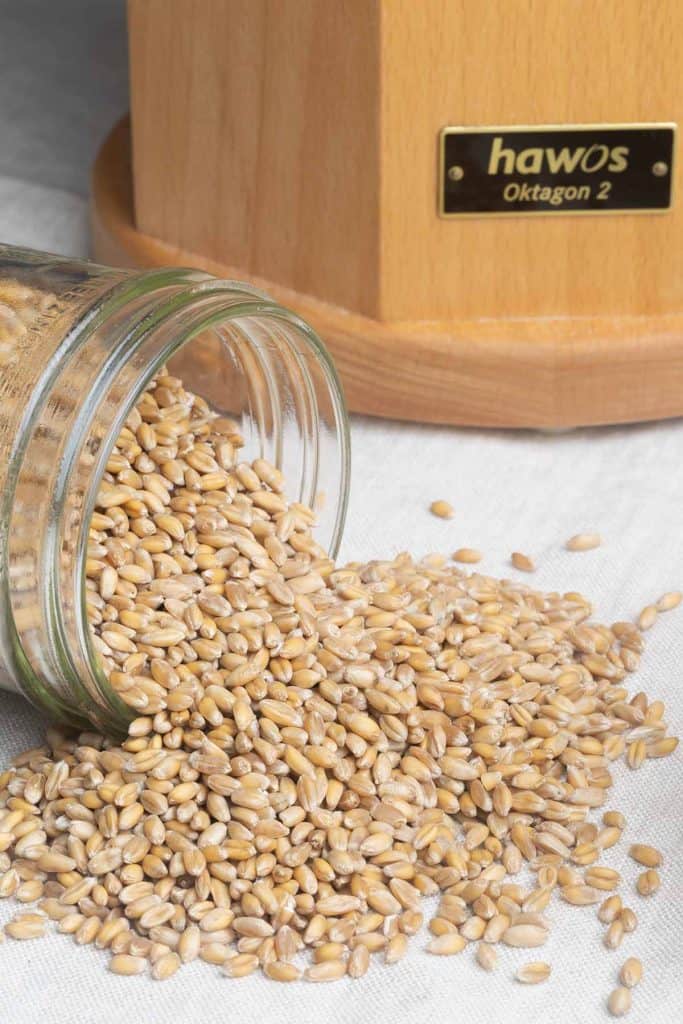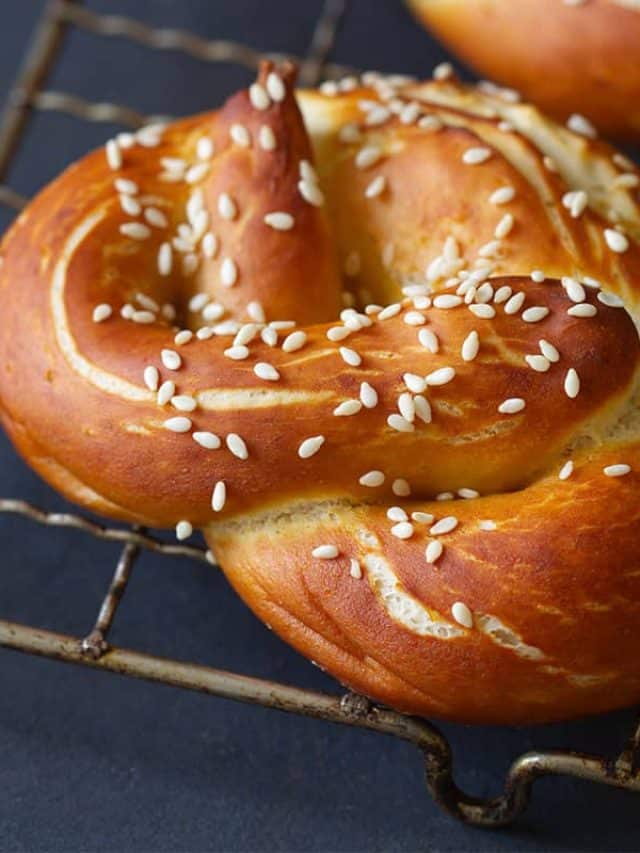Spelt Flour Guide
Spelt flour is made from the ancient Triticum spelta grain, a subspecies of wheat, with a nutty flavor and nutritional benefits. Known as Dinkel in German, spelt is a suitable alternative to wheat flour in various recipes, but it does contain gluten despite some misconceptions online. This spelt flour guide covers everything you need to know about this heirloom grain including its history, its benefits, and popular recipes.

History
Spelt is an ancient grain high in protein that’s native to Iran and parts of Europe. It was among the earliest wheat species that was used for making bread but unfortunately, the heirloom grain fell out of favor as farmers cultivated modern crops and more convenient-to-harvest varieties.
What does spelt flour taste like?
Spelt flour offers a unique and nutty flavor, similar to barley, and is slightly sweeter and richer in taste compared to regular wheat flour.
Bakers and chefs appreciate spelt flour’s distinctive nuttiness, which adds a delightful depth of flavor, making it a favored choice for creating unique and flavorful baked goods and dishes.
White spelt flour vs. whole grain
There are two varieties of spelt flour: white and whole grain. Whole grain spelt flour is made by processing the entire spelt grain, including the bran, endosperm, and germ.
On the other hand, white spelt flour is a more refined version with most of the bran and germ removed, leaving a lighter and less textured product.
Spelt flour substitutes
If you need a substitute for spelt flour you can consider the following options:
- Whole Wheat Flour: Whole wheat flour is the closest substitute to spelt flour in terms of flavor and texture. It also retains the bran and germ, providing similar nutritional benefits.
- All-Purpose Flour: All-purpose flour can be used as a general substitute for spelt flour in most recipes. Keep in mind that it is refined and lacks some of the nutritional benefits of spelt.
- Einkorn Flour: Einkorn is another ancient grain similar to spelt, and its flour can be a suitable replacement in certain recipes.
- Barley Flour: Offering a similar nutty flavor and texture, barley flour can be used as a substitute for spelt flour.
What is the difference between spelt, emmer and einkorn?
Spelt, emmer, and einkorn are all ancient grains belonging to the wheat family (Triticum species) but they are not as widely cultivated as modern wheat varieties.
- Spelt (Triticum spelta): Spelt is a hexaploid wheat species, meaning it has six sets of chromosomes. It was one of the first wheat species cultivated by humans and has been used for thousands of years. Spelt has a tough outer husk that protects the grain, making it more resistant to pests and disease. It has a mild nutty flavor and is often used as a substitute for modern wheat in baking.
- Emmer (Triticum dicoccum): Emmer is another ancient wheat species, but it is a tetraploid, having four sets of chromosomes. Like spelt, emmer was cultivated in ancient times and was an essential crop in early agricultural civilizations. Emmer has a higher protein content and a slightly chewier texture compared to modern wheat.
- Einkorn (Triticum monococcum): Einkorn is the oldest of the three ancient grains and is a diploid wheat species with two sets of chromosomes. It was one of the first cultivated wheats around 10,000 years ago. Einkorn has a unique genetic makeup, containing less gluten than modern wheat, making it a potential option for some individuals with wheat sensitivities. It has a rich, earthy flavor and is used in baking, soups, and salads.

Where can I buy spelt flour?
Outside of Germany, spelt or Dinkel remains a specialty item, and it’s commonly available in health food stores or directly from mills, where buying in bulk can help save on costs.
You have the option to purchase whole grains or freshly milled spelt flour from farmers, coops, or reputable retailers or start milling your own flour at home for optimal freshness.
When buying from unpackaged stores, it’s essential to check the age and storage conditions of the grains to ensure their quality.
I buy my spelt grains from a small organic farm called Milmore Downs in the South Island in New Zealand and they also offer freshly-milled whole grain spelt flour.
If you’re living in the United States, check out the Oldways Wholegrain Council for a list of local grain suppliers.
Hodmedod’s offers the British market grains from local farms and Landwirt.com services the German and Austrian markets.
3 ways to use spelt flour
The rustic and deep flavors of spelt make it ideal for a variety of foods:
- Bread: Use spelt in baking bread, crackers, fresh pasta, and pizza dough.
- Sweet baked goods: Bake your favorite cakes, muffins, cookies, and sweet treats with spelt to give them nutty and rustic flavor.
- Savory dishes: Cook whole-grain spelt berries as a replacement for other carbohydrates, such as rice or pasta.
When using spelt flour, it’s essential to avoid over-mixing because spelt contains a delicate gluten structure. Over-mixing can lead to the development of excessive gluten, resulting in a tougher and denser final product.

My favorite spelt recipes
Here are my favorite spelt recipes that I’ve been using for years, and they are incredibly easy to prepare:
- Easy spelt bread / Dinkelbrot
- Soft spelt pretzels
- Spelt pancakes (substitute all-purpose flour with white spelt flour 1:1)
- Spelt chocolate chip cookies (substitute all-purpose flour with white spelt flour 1:1)
- Spelt waffles (substitute all-purpose flour with white spelt flour 1:1)






